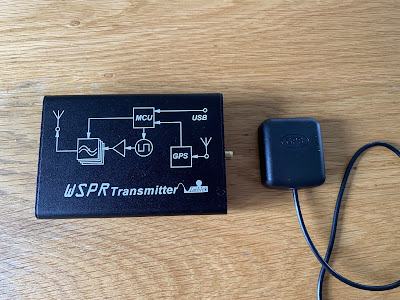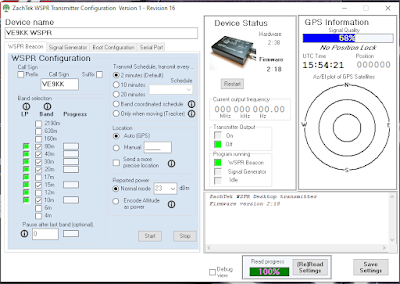 Amateur Radio Weekly – Issue 350
Amateur Radio Weekly – Issue 350
Helene Aftermath: Aid, community resilience, and egress/ingress
We are still using a simplex frequency (147.55 MHz) for communications in the neighborhood and another (146.52 MHz) for the Swannanoa area on the VHF calling frequency.
QRPer
Ham Radio and the aftermath of Helene
Traditional media reports are beginning to pop up, highlighting the ability for Amateur Radio to help during natural disasters.
Amateur Radio Daily
Space Station Slow Scan TV transmissions
ARISS is planning a Slow Scan Television (SSTV) experiment from the International Space Station, scheduled to start on Tuesday, October 8, and running until Monday, October 14.
AMSAT UK
Tiny4FSK – The lightweight Horus Binary Tracker
Tiny4FSK aims to be an ultra-tiny high-altitude tracking system. It runs on 1 AA battery that lasts for 10-17 hours.
New England Weather Balloon Society
Strongest solar flare of Solar Cycle 25
Two CMEs are now heading for Earth following consecutive X-flares.
SpaceWeather.com
Tinkering with an antenna
As this was going to be an experimental antenna, I didn’t care too much how kludgey the thing looked.
KB6NU
Making your first QSOs on 10 GHz using the Icom IC-905
KI8R, with help from the active community of microwave operators and assistance provided by rain scatter propagation, makes two QSOs on 10 GHz.
OnAllBands
Python code to generate WSPR audio tones
This works both on my Mac and on a Raspberry Pi with no modification.
marxys musing on technology
How to take backpack portable radio to the next level
Field trials – including a couple of successful POTA activations – with this arrangement verified that the backpack has sufficient stability to support a 20m quarter wave whip.
Ham Radio Outside the Box
Voice of America will get a new headquarters
For 70 years it has been based at its current location, almost in the shadow of the U.S. Capitol.
Radio World
The 1924 Martian Signal: A cosmic curiosity
The U.S. Navy imposed a nationwide radio silence for five minutes each hour to allow observatories to listen for signals from Mars.
Hackaday
Video
AWA AM QSO Party
Operating a rare Collins KW1 at the Antique Wireless Association during their annual AM QSO Party.
N2MAK
Get Amateur Radio Weekly in your inbox.
Sign-up here
Amateur Radio Weekly is curated by Cale Mooth K4HCK. Sign up free to receive ham radio's most relevant news, projects, technology and events by e-mail each week at http://www.hamweekly.com.
 Help: Searching for a Special Teletype
Help: Searching for a Special Teletype
Around 2000-2005 my grandfather, Carl McDaniel, W3HC (SK) (ex W3HCW) in Williamsport, PA sold his Model 15 KSR teletype to someone. I have no idea who. Below is a picture of the teletype in 1973, with me beside it.

When it was sold it was paired with a black equipment cabinet which the unit sat upon, rather than the table it is pictured on above. The cabinet contains the black panel mounted in the table shown above with a CRT for RTTY tuning in the upper left and some filler panels.
If you know where this teletype is located, please contact me at [email protected]. I would be willing to pay a good price for it, assuming its in reasonable condition. At the very least it would be nice to know who has it now as it has special value to me and my family.
This article was originally posted in Radio Artisan.
Anthony, K3NG, is a regular contributor to AmateurRadio.com.
 Amateur Radio Weekly – Issue 349
Amateur Radio Weekly – Issue 349
FT8 Superfox cracked
DXpedition security key has been cracked.
ICQ Podcast
Hurricane Watch Net: How Ham Radio Operators track storms
A real-life example: Hurricane Beryl
Ham Radio Prep
SDR Television
A pure software solution for DVB-S2 H.264 / H.265 / AAC digital television receive and transmit.
SDR-Radio.com
SolderSmoke Daily News experimental podcast
Short form Ham Radio Podcast experiments with AI.
SolderSmoke Daily News
Handie-Talkie or Walkie-Talkie?
Motorola trademarked the name Handie-Talkie and used that nomenclature for many years.
K0NR
Is Tesla the “inventor of radio”? No Marconi was
Tesla cannot be considered the “inventor of radio” based on the 1943 Supreme Court ruling.
VE3IPS
NVIS for EMCOMM and survival communications
In practical terms, this distance is 50-500 miles.
Off Grid Ham
High School Radio Club collects time zones
Students were active on the D-Star network speaking to other operators from across the world.
RSGB
The history of microbroadcasting and how you can too
The untapped potential of Amateur Radio.
Lori Emerson
FCC escalates enforcement of pirate radio in Miami, NYC metro area
Commission carries out three fines, has three more proposed.
Radio World
Video
ARRL Director provides additional details around ARRL systems disruption
Editors note: ARRL released a statement describing portions of these details as not factual.
Southeastern DX Club
2024 Oregon SOTA Campout
Summits on the Air Activators and Chasers alike descended upon Howard Prairie Campground for the annual SOTA campout.
N7KOM
Get Amateur Radio Weekly in your inbox.
Sign-up here
Amateur Radio Weekly is curated by Cale Mooth K4HCK. Sign up free to receive ham radio's most relevant news, projects, technology and events by e-mail each week at http://www.hamweekly.com.
 New WSPR transmitter.
New WSPR transmitter.
For some time I have been interested in the all-in-one type WSPR transmitter. A fellow blogger Paul PA0K posts his WSPR adventures using the SOTAbeams WSPRlite model. This unit is no longer available and when I did a web search I found very few units on the market. The unit I purchased was the Zachtek WSPR Desktop transmitter. The desktop transmitter has great reviews on Eham. The YouTube videos I watched about this product emphasized its compact size, works right out of the box, is easy to set up and can run independently without a PC.
The unit I ordered was the 80m to 10m WSPR desktop. The package came from Sweden and was at my door in under 6 days. Along with the Desktop device, you also get a USB to USB-micro cable and a GPS antenna with a 3m cord with an SMA connector. If you do plan to order one of these units be aware you will need an SMA to SO239 pigtail as it does not come with the unit. They can be ordered at Zachtek's website. Fortunately, I had one as it is used with my NANO VNA unit. 
Needed cable
Some of the selling points for me were:
- It's small size.
- Great reviews.
- Option to run it with or without a PC.
- Easy setup software available on Zachtek site.
- An LED light on the unit that indicates good or bad GPS lock, when transmitting and when idle.
- Automatic band switching.
- The unit is not affected by an extremely high SWR.
It was time to connect up the unit and I went to Zachtek and downloaded the operating software. I connected the unit to my PC via the USB to micro cable for the first time setup of the WSPR desktop, I connected the GPS antenna and connected my Hustler 4BTV to the antenna port via the SO-239 to SMA connector. I entered my call in the box provided and selected the bands I wanted the unit to work on. As a side note, there is also a download for USB to serial driver but I already had that and it was working with no problems with my NANO VNA. I then pressed the start button on the software. I was supposed to see GPS information and the device status. Instead, I saw absolutely nothing.Nothing happened
I tried changing the USB port I was using, I then downloaded and installed the USB to serial driver from Zachtek as maybe it was a more up-to-date driver. I tried again and nothing happened. I know my NANO VNA has no issues working on my PC and using the USB to serial port driver, maybe a Win10 update messed things up. I connected the NANO VNA via its USB cable and it came to life. I then plugged the VNA into the same port the WSPR desktop was plugged into and it worked fine. I plugged the NANO VNA into the cable that came from Zachtek and the NANO VNA refused to start! I plugged the WSPR desktop into the NANO VNA USB cable and the unit came to life. The device status came up and the GPS showed connection status. The issue was the USB-Micro cable from Zachtek it was defective right out of the box. I informed Zachtek of this a few days ago but as of yet, I have not heard back.
Once the cable issue was solved the unit worked like a dream. In my next post the result of a 24-hour WSPR run with my Hustler 4BTV as well why the heck did I get this thing and how is it going to help my contesting adventures?
Mike Weir, VE9KK, is a regular contributor to AmateurRadio.com and writes from New Brunswick, Canada. Contact him at [email protected].
 Handie-Talkie or Walkie-Talkie?
Handie-Talkie or Walkie-Talkie?

In ham radio, we often use Handie-Talkie or HT to describe a compact, handheld transceiver. My first exposure to the term Handie-Talkie was when I first became a licensed radio amateur in 1977. While I was a student at Purdue University (W9YB), the absolute coolest VHF radio to have was the Motorola HT-220. Even a used one commanded a high price so they were out of my price range and I never owned one. These were 6-channel crystal-controlled transceivers…back then you had to set up the radio with the particular 2m frequencies you wanted to use. Because it was such an iconic radio, there are many HT-220 enthusiasts still around with websites with tons of useful information. See the HT-220 Page.
Motorola trademarked the name Handie-Talkie and used that nomenclature for many years with its line of portable radios. However, this trademark has expired, so now Handie-Talkie is a generic term.
The First Handie-Talkie
But the HT-220 was not the first Handie-Talkie, so I started poking around to find out how this name originated. Back in World War II, the SCR-536 was a portable “hand-held” transceiver developed in 1940 by Galvin Manufacturing (later Motorola, Inc.) I put “hand-held” in quotes because, by today’s standards, it was a Hand FULL. But most people consider the SCR-536 to be the first modern, self-contained HT transceivers. The Wikipedia article for the SCR-536 describes the radio quite well. The radio put out about 360 mW of RF power on 3.5 and 6.0 MHz (Oops, I mean 3500 to 6000 kilocycles) using Amplitude Modulation (AM). The circuitry relied on smallish vacuum tubes, creating quite a design challenge. Motorola has a page on its website that talks about the origins of the radio. IEEE Spectrum also published an excellent article: The SCR-536 Handie-Talkie Was the Modern Walkie-Talkie’s Finicky Ancestor. The January 2005 issue of QST has an interesting article by Gil McElroy, VE3PKD, A Short History of the Handheld Transceiver. It provides more history and insight to this fun topic.

The First Walkie-Talkie
A few years later (1942), a backpack portable radio was introduced, called the SCR-300. I always assumed that the backpack-style radio would have come first and the more compact radio SCR-536 would be later. (Actually, there were previous backpack radios, such as the SCR-194). This new backpack-style radio was referred to as a Walkie-Talkie. According to the manual, the SCR-300 was “primarily intended as a walkie-talkie for foot combat troops”. I suppose the emphasis was on how you can walk and talk, with a radio on your back.

This article: SCR-300 WW2 Radio Backpack: The “Walkie Talkie” That Shaped the War describes this radio as a game-changer for frontline troops. The radio weighed a heavy 35 pounds, and used Frequency Modulation (FM) on 40 to 48 Megacycles.
Of course, with technology development, there is always the question of “who was first”? The SCR-194 that predated the SCR-300 might be considered the first walkie-talkie. However, the SCR-300 and the SCR-536 seem to get all of the glory, probably due to their impact on the war effort. However, take a look here if you want to dig deeper: TALK the WALK or WALK the TALK: Who actually developed the first Walkie-Talkie?
This article describes the development and use of the SCR-300 and mentions some of the limitations of the SCR-194: SCR-300 History Development Employment and Details Final Draft This is a big file with many photos but worth reading if you have the time.
Today’s Terminology

Fast forward to today and we see that the HT and Handie-Talkie nomenclature is common in the amateur radio world. The photo to the left shows a modern 2m/70cm HT, the Yaesu FT-4X.
The term “walkie-talkie” has morphed to something quite different and is used generically to describe a handheld radio. This term covers a wide range of radios, from low-cost Family Radio Service (FRS) radios to higher-quality professional radios. This is quite different from the original Walkie-Talkie, a backpack radio weighing 35 pounds.
The military has progressed with improved communication technology, still using backpack-style radios, now referred to as manpack radios. These are amazing radios that pack extensive capability into a relatively small package. The AN/PR-158 shown below covers 30 to 2500 MHz in frequency, satellite comms, advanced encryption, narrowband and wideband modes: AM, ASK, FM, FSK, PSK, CPM, GMSK, and plenty more. This radio weighs 12.7 pounds with the battery installed, so a lot lighter than the old SCR-300.

So that’s a quick tour through some radio terminology along with a bit of historical perspective. I discovered there is an infinite supply of information out there on the history and technology of military radios. If you want to dig deeper, go for it!
73 Bob K0NR
The post Handie-Talkie or Walkie-Talkie? appeared first on The KØNR Radio Site.
Bob Witte, KØNR, is a regular contributor to AmateurRadio.com and writes from Colorado, USA. Contact him at [email protected].
 ICQ Podcast Episode 439 – Amateur Radio Book Review 2024
ICQ Podcast Episode 439 – Amateur Radio Book Review 2024
In this episode, we join Martin Butler M1MRB, Chris Howard (M0TCH), Frank Howell (K4FMH), and Leslie Butterfields (G0CIB) to discuss the latest Amateur / Ham Radio news. Colin Butler (M6BOY) rounds up the news in brief and the episode's feature is Little Amateur Radio Book Review.
We would like to thank our monthly and annual subscription donors for keeping the podcast advert free. To donate, please visit - http://www.icqpodcast.com/donate
- ARRL Defends 902-928 Amateur Radio Band
- FT8 - SUPERFOX Cracked
- National Preparedness Month: Ensuring Family Safety
- Canadian Teens Gain Licenses After Ham Radio Coursework
- Sri Lankan Girl Guides Find Power in Ham Radio
- New ACMA Licensing Fees
- UK Paper Amateur Radio Exams to End
Colin Butler, M6BOY, is the host of the ICQ Podcast, a weekly radio show about Amateur Radio. Contact him at [email protected].
 LHS Episode #556: The Birds and the BeOS
LHS Episode #556: The Birds and the BeOS
Hello and welcome to the 556th installment of Linux in the Ham Shack. In this short topics episode, the hosts discuss National Preparedness Month, the AMSAT Space Symposium for 2024, Jamboree on the Air, new versions of Pop!_OS and Haiku, Gnome 47 and much more. Thanks for listening and have a great week.
73 de The LHS Crew
Russ Woodman, K5TUX, co-hosts the Linux in the Ham Shack podcast which is available for download in both MP3 and OGG audio format. Contact him at [email protected].


















